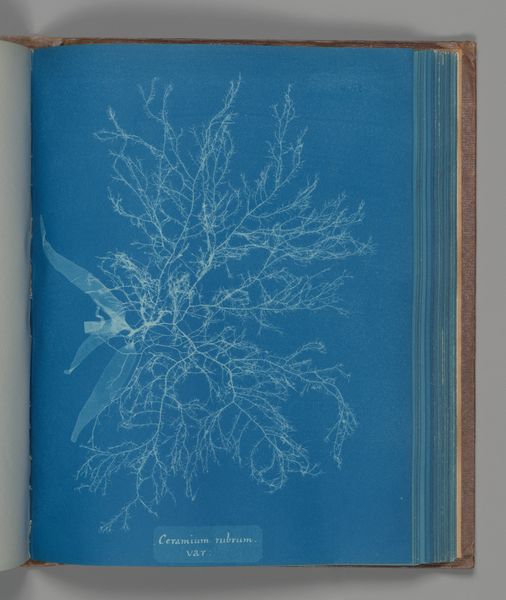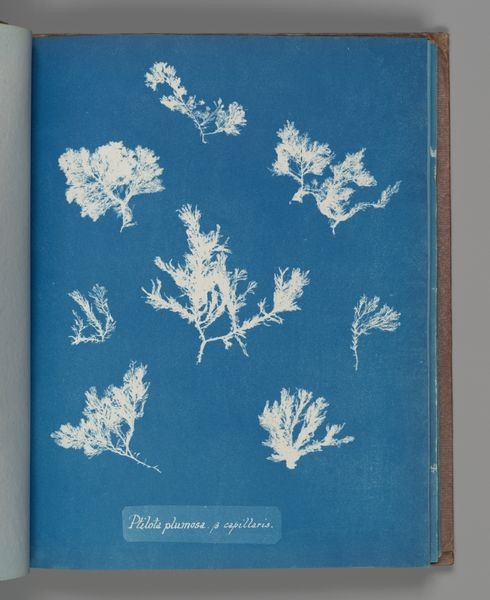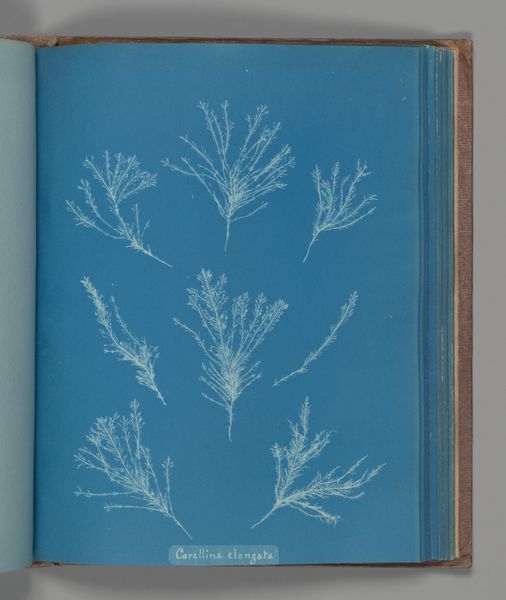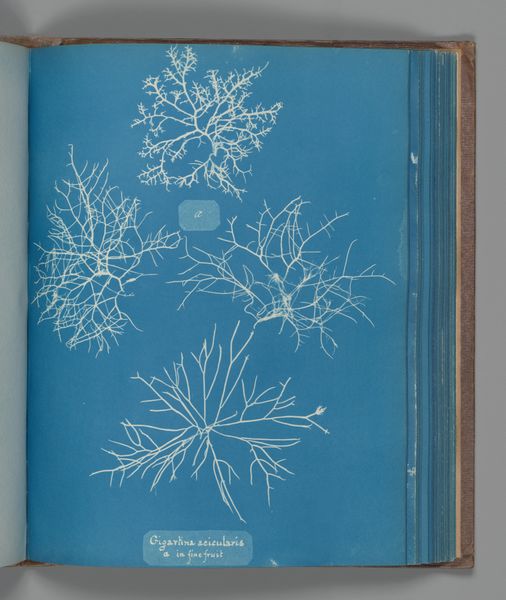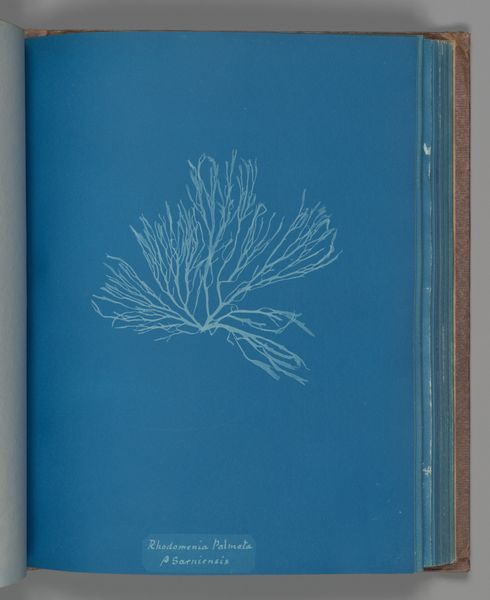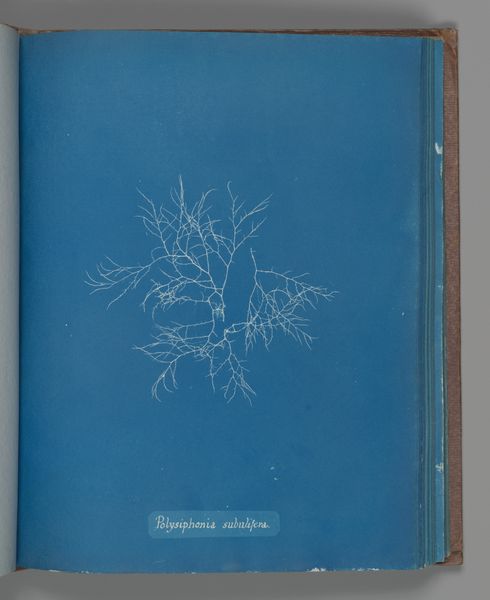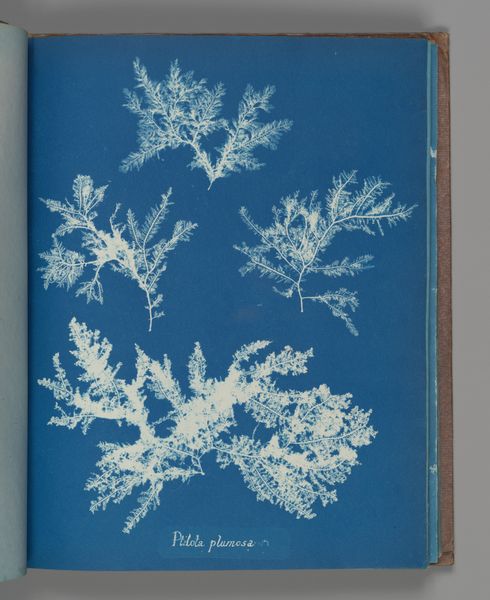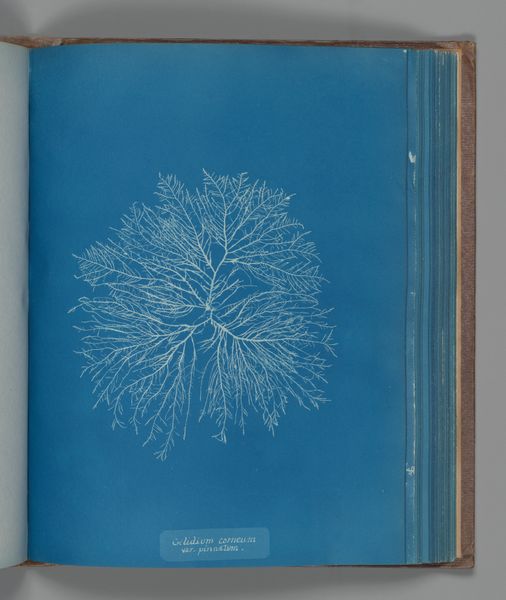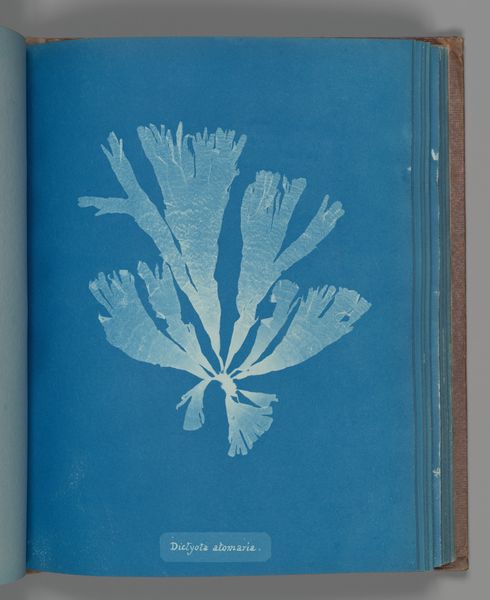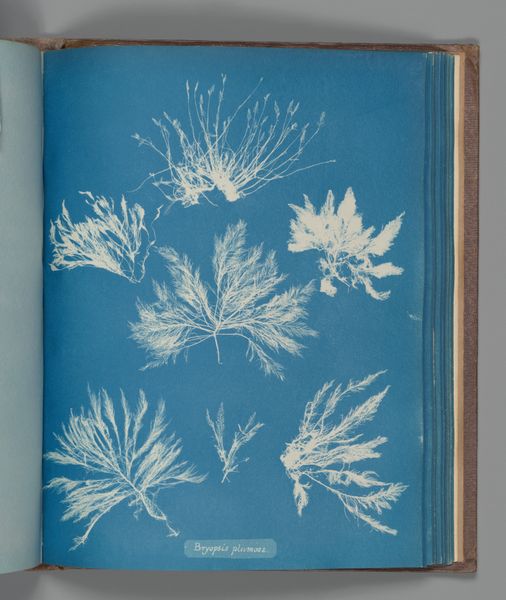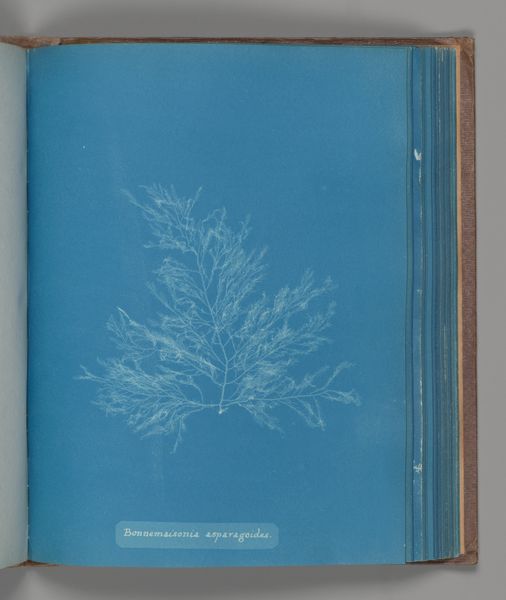
Dimensions: Image: 25.3 x 20 cm (9 15/16 x 7 7/8 in.)
Copyright: Public Domain
Curator: Isn't it funny how sometimes the most delicate things leave the strongest impression? Editor: Indeed. The striking blue hues Anna Atkins achieved with her cyanotype process immediately grabbed my attention. Curator: This is Chylocladia ovalis, dating from around 1851 to 1855. What’s wonderful is how Atkins used photography – then such a new technology – to document her extensive study of algae, almost like she was painting with light itself. It's currently housed at the Metropolitan Museum of Art. Editor: The detail captured using just light-sensitive paper and the sun feels alchemical, really. One can’t help but marvel at how innovative Atkins was, not only scientifically in terms of accurate botanical record, but also aesthetically. You could argue the very production becomes the artistic statement— the paper itself, its texture and processing, are the piece's foundations. Curator: Absolutely. There's a dreamy quality to the print, isn't there? A spectral presence of this seaweed. For me, I’m just captivated by that single image— the choice of what to focus on in all that sea of possibilities. Editor: Agreed. Focusing on the material shifts one’s focus from passive consumption to active appreciation, of how the physical labor is imbued within the creation itself. It also disrupts old hierarchical structures surrounding labor; questioning assumptions. Curator: It certainly encourages us to look closer, to see the beauty in process, even beyond the image. The art really makes one question our perspectives regarding beauty and industry; the work challenges how we categorize them separately. Editor: Looking at "Chylocladia ovalis," I feel inspired to reconsider the value and place of art. The piece creates a link from botany to innovative material manipulation—an awakening in photographic artistry through its complex, multi-layered form and purpose. Curator: What remains so impressive for me is how her process underscores the possibility in scientific imaging - making beautiful art out of observation. Editor: For me, considering materiality emphasizes its unique story of creation. We understand its connection and the conditions necessary in its development more acutely— and isn't that profound.
Comments
No comments
Be the first to comment and join the conversation on the ultimate creative platform.

